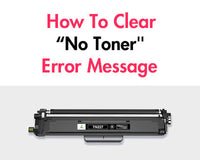The index of this article is as follows:
- What Is DTF Transfer and How Does It Work
- Differences Between Regular Printer Ink and DTF Ink
- Can You Actually Use Regular Printer Ink for DTF Transfer
- Recommended Alternatives for DTF Printing
Introduction
DTF Transfer is a printing technique that has rapidly gained popularity in the apparel and textile industries in recent years. Its relatively simple operation and ability to achieve high-quality pattern transfers on different materials (e.g., cotton, polyester, blends, etc.) have made it popular among DIY enthusiasts and professional printers alike. With the popularization of DTF technology, many people have begun to try to use home printers to complete DTF transfers. However, the question arises: can you use DTF transfer with regular printer ink?
On the surface, this seems convenient – after all, regular ink is more affordable and widely available. But does it really work? Can you save yourself the hassle of investing in DTF inks while still getting high-quality results? In this article, we'll go over how DTF transfers work, the differences between regular and DTF inks, and the problems that may arise from using regular ink for DTF printing. With this article, you will have a comprehensive understanding of the technical requirements for DTF printing and know how to get the best DTF printing results.
What Is DTF Transfer and How Does It Work?
DTF transfer stands for Direct to Film transfer, a modern printing method that allows you to print a design on a special PET film and then transfer it onto a fabric (or other surfaces) using a heat press. Unlike traditional methods such as screen printing or sublimation, DTF works on almost any type of fabric – cotton, polyester, blends, and even dark-colored materials. It's especially popular in the custom apparel industry for creating high-quality, durable designs.
🔎The DTF transfer process typically requires:
- A DTF-compatible printer.
- DTF-specific ink (usually pigment-based).
- PET transfer film with a special coating.
- Hot melt powder for adhesion.
- A heat press for transferring the pattern.
DTF's versatility and high-quality results make it a favorite among small businesses and hobbyists. But the key to its success lies in using the right materials – especially the ink.
📌The DTF transfer process works as follows:
Step 1: Printing the Design
- Use graphic design software to create the pattern you want.
- Print the design onto PET (polyethylene terephthalate) film using a DTF printer and specialized DTF inks.
- Add a white ink underlayer to enhance the vibrancy and opacity of the design, especially on dark fabrics.
Step 2: Applying Adhesive Powder
- Sprinkle a layer of adhesive powder (usually made of polyurethane) over the wet ink.
- Gently shake the film to remove excess powder, leaving an even coating on the printed design.
Step 3: Curing the Adhesive
Heat the film with the adhesive powder to melt and cure the adhesive, creating a tacky base that helps bond the design to the fabric during the heat-pressing process.
Step 4: Transferring the Design
- The cured film is placed on the target fabric.
- The heat press machine applies heat and pressure to bond the adhesive and ink to the fabric fibers.
- After cooling, the PET film is peeled off, leaving a vibrant and durable design on the fabric.
This process produces highly detailed, full-color patterns with excellent stretch and washability – but only if the right inks and adhesives are used.
Differences Between Regular Printer Ink and DTF Ink
To understand whether regular inks are suitable for DTF transfers, we need to analyze the main differences between DTF inks and standard printer inks. Below is a detailed comparison between them:
1. Composition and Formulation
Regular inks are divided into dye ink and pigment ink. They are made from water, dyes or pigments, and additives, designed for paper printing, and don't adhere well to fabric. Dye-based inks are vibrant but fade easily, while pigment-based inks, though more durable, still aren't suitable for textiles. In contrast, DTF ink is pigment-based and contains polymers and resins that bond with hot-melt powders and fabric fibers, ensuring strong adhesion, vibrant colors, and durability while keeping fabrics soft and breathable.
2. Color Performance
Regular printer ink works well on paper but often bleeds or fades on fabrics. It also lacks white ink, making it hard to achieve sharp contrasts on dark fabrics. DTF ink, however, uses water-based pigments for rich, long-lasting colors and supports white ink for better contrast on dark fabrics. Combined with binder powder, it maintains color integrity during transfer.
3. Adhesion and Durability
Regular ink, especially dye-based, fades when washed, while pigment-based ink flakes off after washing and can't withstand high heat. DTF ink, on the other hand, bonds with fabric fibers and hot-melt powders during heat pressing, creating a flexible, durable layer that resists water, stretching, and multiple washes without peeling or cracking.
4. Compatibility with Fabrics
Regular ink doesn't adhere well to most fabrics and can't bond with adhesive powder, making it unsuitable for fabric printing. DTF ink, however, works on cotton, polyester, and blends, chemically bonding with adhesive powder to ensure designs stay intact and vibrant on both light and dark fabrics.
5. Cost and Availability
Regular ink is cheaper and widely available but often leads to wasted materials and poor results on fabrics. DTF ink is more expensive and requires specialized printers, but its high-quality, durable prints make it a worthwhile investment for serious fabric printing.
Can You Actually Use Regular Printer Ink for DTF Transfer?
Technically, you can try to use regular printer inks for DTF transfers - but you're unlikely to get professional-quality results. Regular inks are not designed for the specific requirements of DTF printing, such as heat resistance, adhesion to film, and bonding to adhesive powders. If you're determined to experiment with DTF using regular inks, let's explore the feasibility, challenges, and possibilities.
✅Potential Successes:
- If you are trying to transfer onto a light-colored fabric, such as white or beige, regular ink may produce a visible but weak image. Since a white backing is not required for light backgrounds, regular ink looks acceptable after heat pressing.
- After heat pressing is complete, the design may initially look fine, especially if you don't require a high level of detail and durability. For temporary uses or one-off projects, this result may be satisfactory.
- On some synthetic fabrics, such as polyester, regular ink may show slightly better adhesion.
❌Common Problems:
- Regular inks lack the specialized adhesive component found in DTF inks and cannot effectively bond with the hot melt powder. This can cause the transferred image to peel or fade quickly after washing.
- Regular inks are much less saturated and opaque than DTF inks. The transferred pattern may appear dull, faded, or lack vitality, especially on dark fabrics, where color contrast is greatly reduced.
- Regular inks are not designed for fabrics and cannot withstand stretching or rubbing. Patterns are prone to cracking or peeling during wear or laundering, seriously affecting their beauty and durability.
- Most regular printers are unable to print white ink, which means patterns lose contrast and opacity when transferred on dark fabrics.
➡️What Happens If You Try It?
To put theory into practice, let's test the effect of DTF transfers using regular printer ink by following the steps below.
- Print a color pattern onto a DTF PET film using ordinary printer ink.
- Apply the adhesive powder evenly over the printed wet ink.
- Use a heat gun or heat press to cure the adhesive for 2-3 minutes at about 160°C (320°F).
- Place the film on a cotton T-shirt and press for 15 seconds at 160°C (320°F) using a heat press.
- After peeling off the film, check the transfer effect.
You can watch the video below to learn how to complete a DTF transfer using a regular inkjet printer and ink.
Recommended Alternatives for DTF Printing
Here are the key things you need to consider if you want consistent and professional DTF printing results:
1. Invest in DTF-Compatible Printers and Inks
- Convert Compatible Printers: Convert Epson EcoTank or other compatible inkjet printers to DTF printers. These printers are properly modified to support the specific needs of DTF printing. You can refer to our blog: How to Convert a Printer to DTF.
- Use Genuine DTF Inks: Choose genuine DTF inks designed for thermal transfer and adhesive bonding. These inks have excellent adhesion, color saturation, and durability to ensure professional-quality print results.
2. Use Professional DTF Kits
- Buy a Complete DTF Kit: Choose a DTF printing kit that includes PET film, DTF ink, and adhesive powder. These kits are optimized to ensure compatibility between components, thereby improving printing effects.
- Follow Manufacturer Guidelines: Strictly follow the manufacturer's recommended heat press temperature, pressure, and time settings. These parameters are key to ensuring strong pattern adhesion and vibrant colors.
3. Explore Other Printing Methods
If you’re not ready to invest in DTF equipment, consider these more accessible alternatives:
- Sublimation Printing: Suitable for polyester fibers or polyester-coated materials, sublimation printing can provide vibrant colors and long-lasting pattern effects.
- Heat Transfer Vinyl (HTV): Ideal for small batches or personalized designs, HTV is simple and inexpensive, especially for beginners or small projects.
Conclusion: Can You Use Regular Ink for DTF?
So, can you use regular printer inks for DTF transfers? Technically, yes – but in practice, the results may be less than satisfactory. Regular inks are not formulated for DTF transfers, so even with modification, you will face issues with adhesion, durability, and color vibrancy. While you may get short-term results on lightweight fabrics, the pattern may fade, peel, or crack after washing.
If you're serious about DTF printing, investing in the right DTF inks and equipment will save you time, frustration, and money in the long run. If you're doing DIY for fun or personal projects, mixing regular inks with DTF additives or using a white vinyl base may bring some improvement - but don't expect professional results.
Have you tried DTF transfers using regular printer ink? Share your experiences in the comments – we'd love to hear about your progress!
Related Reading:













